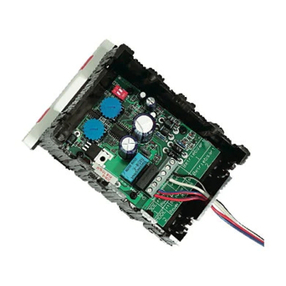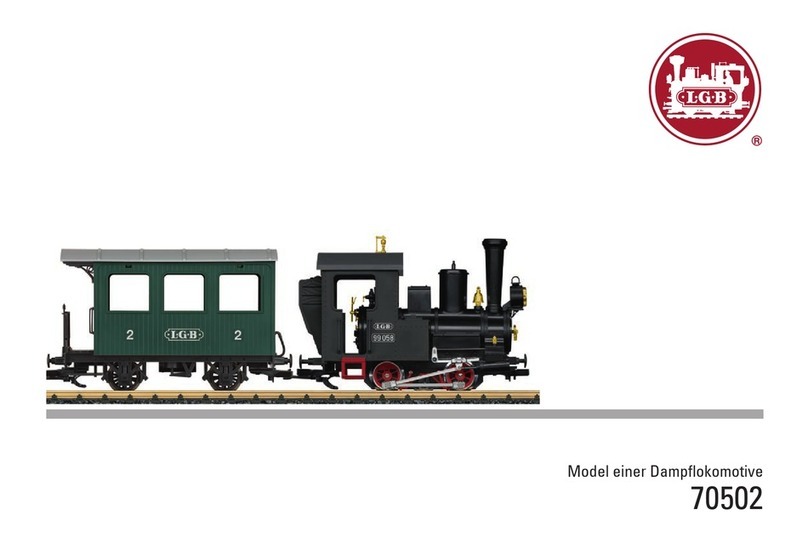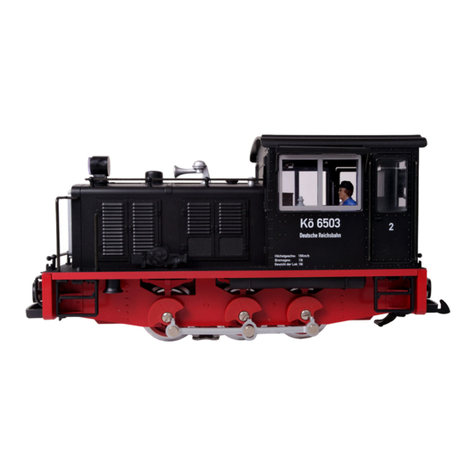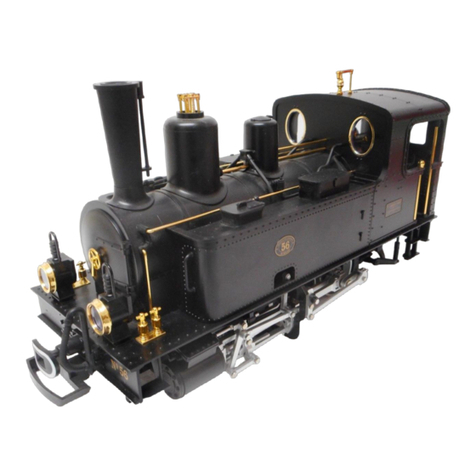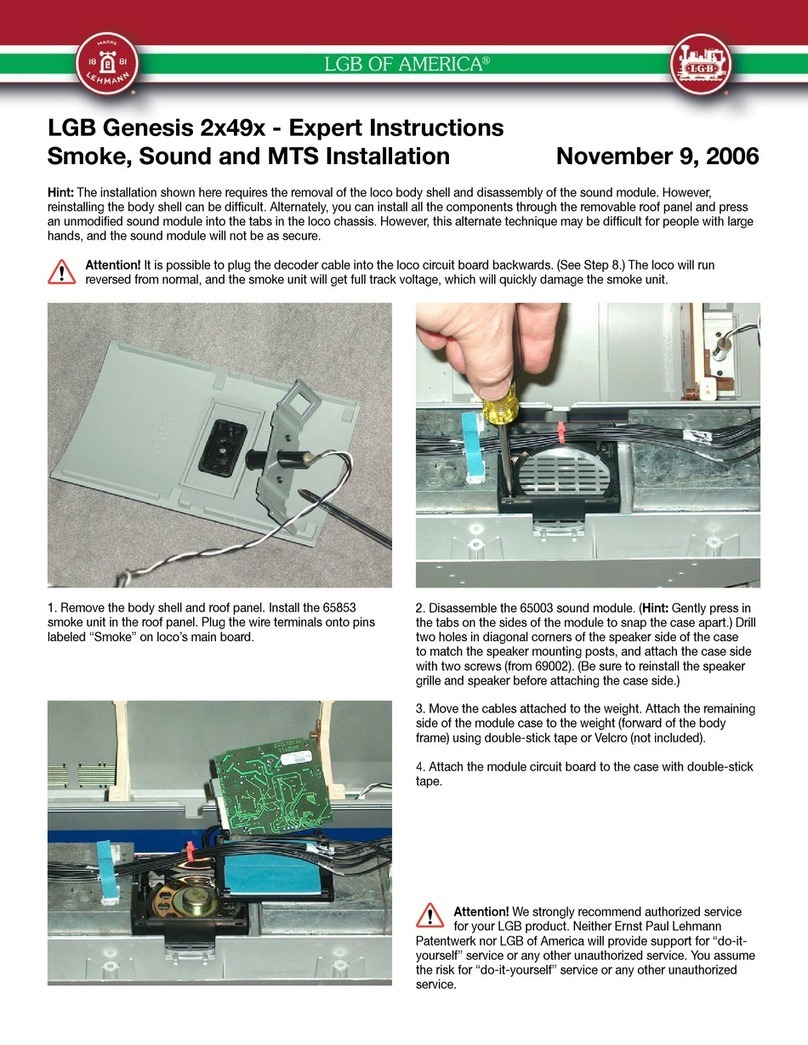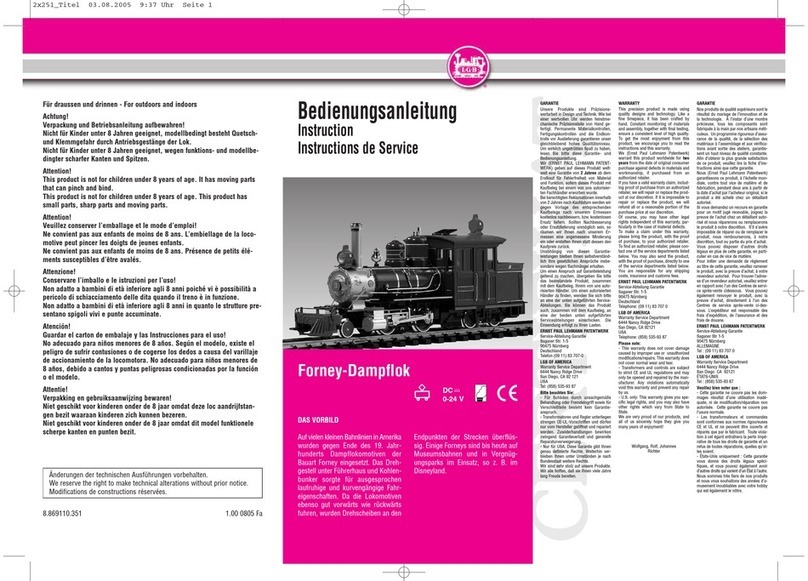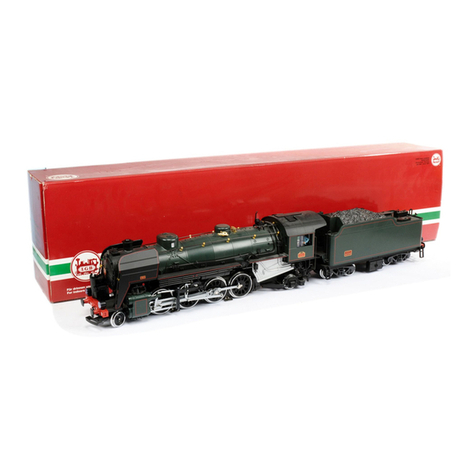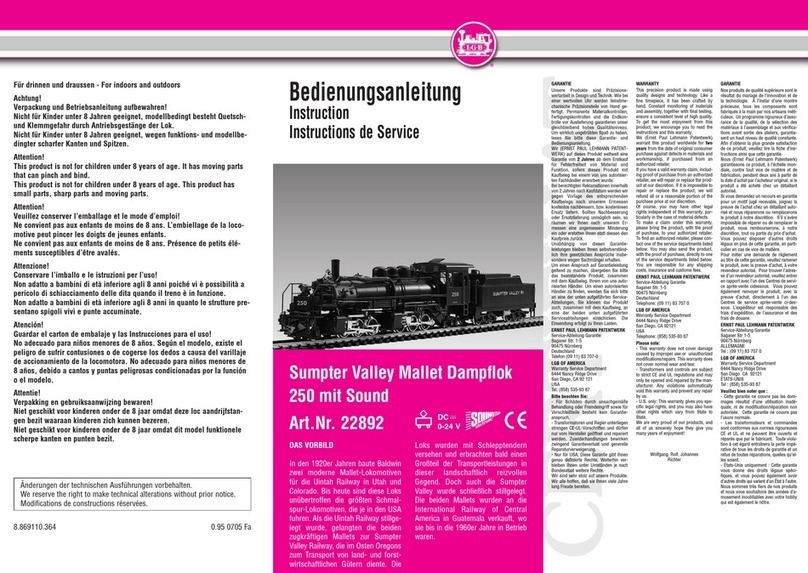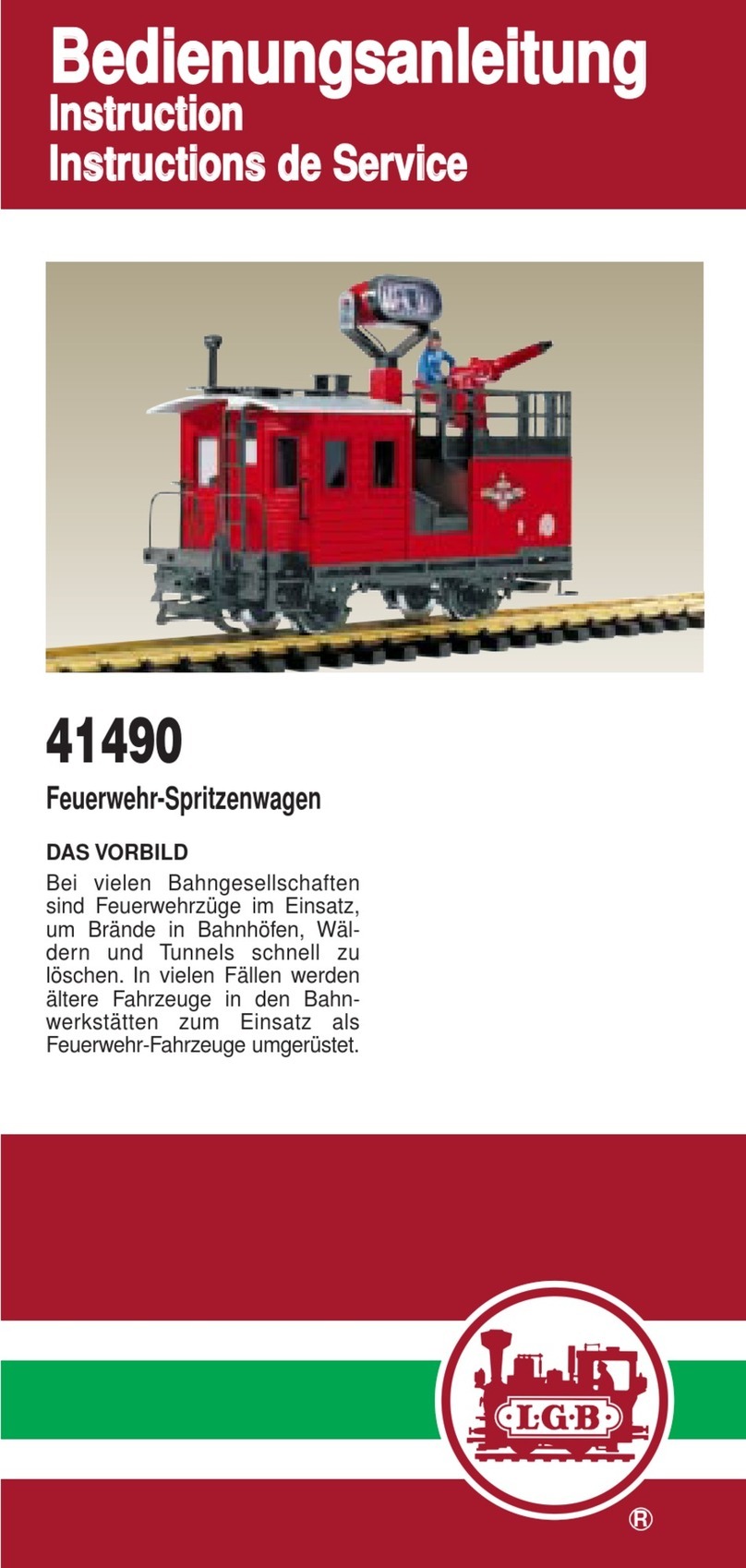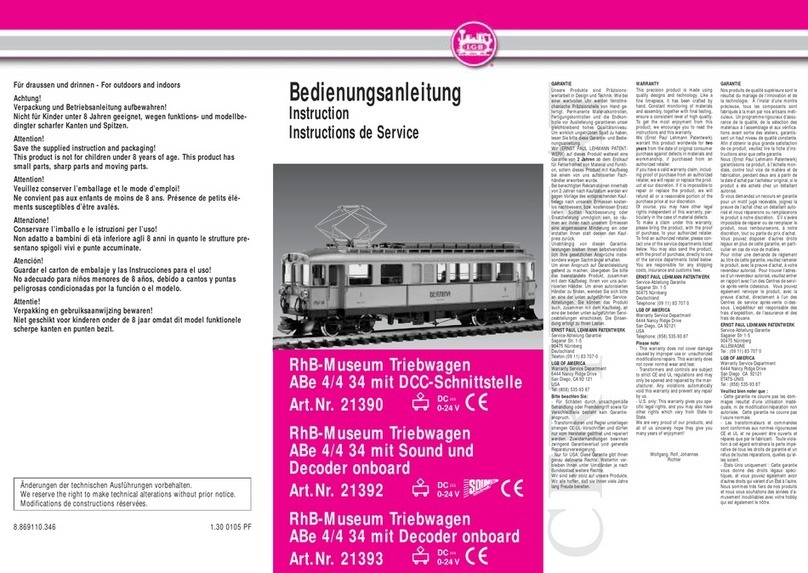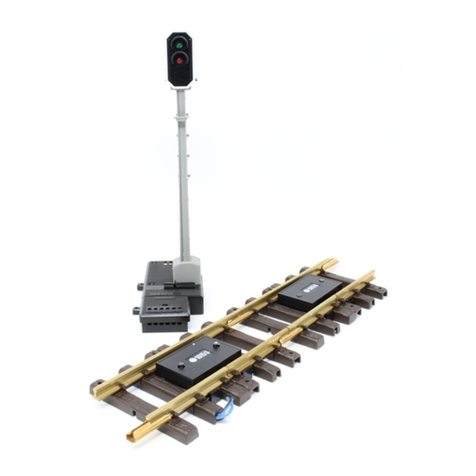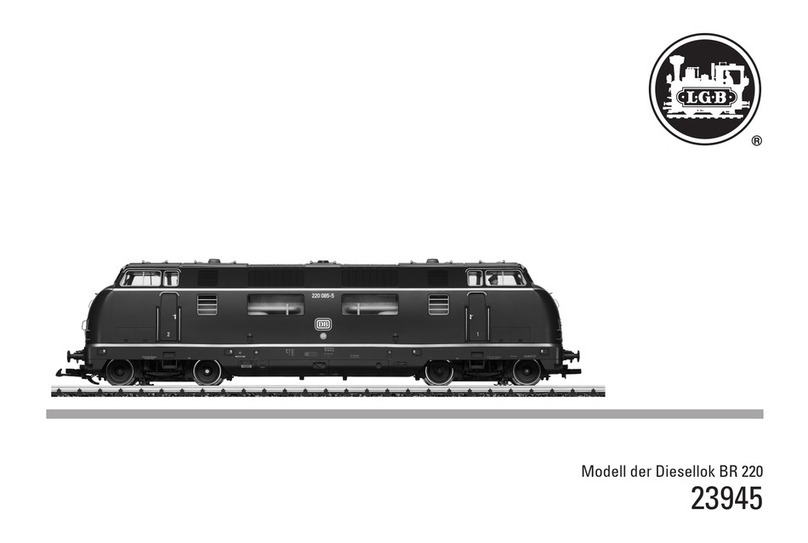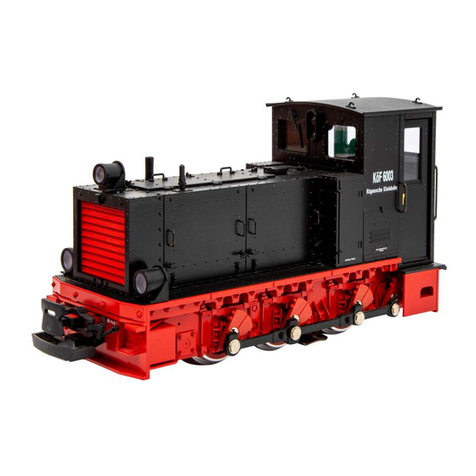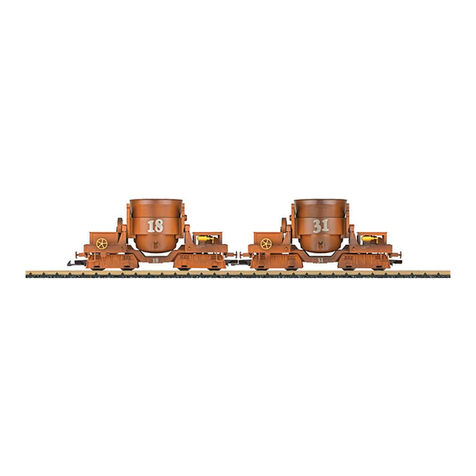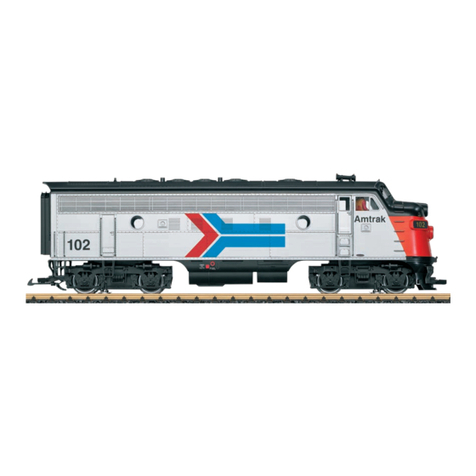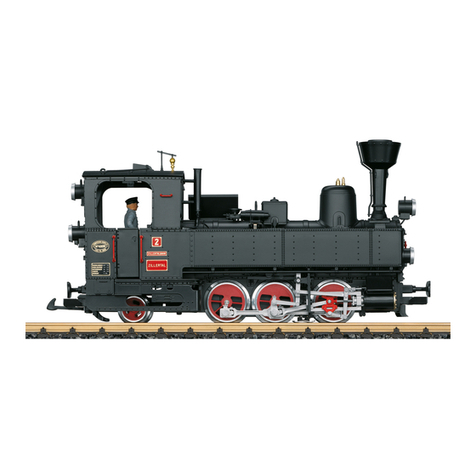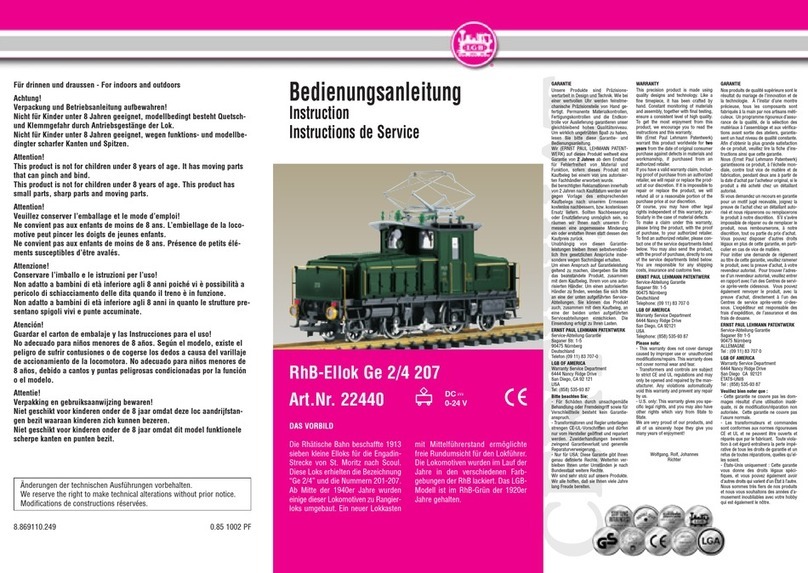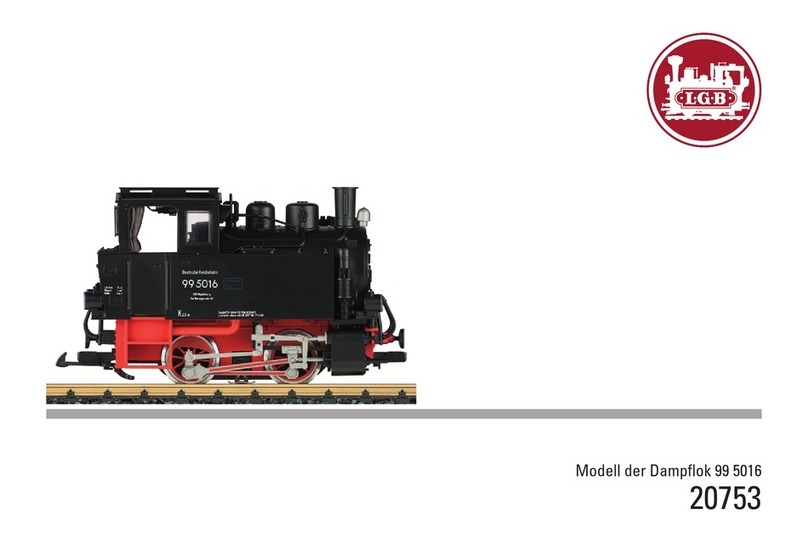10
Safety Notes
• Thismodelmayonlybeusedwiththeoperatingsystemdesignedforit.
• Useonlyswitchedmodepowersupplyunitsandtransformersthataredesigned
for your local power system.
• Thislocomotivemustneverbesuppliedwithpowerfrommorethanonepowerpack.
• Paycloseattentiontothesafetynotesintheinstructionsforyouroperatingsystem.
• Notforchildrenundertheageof15.
• WARNING! Sharp edges and points required for operation.
Important Notes
• Theoperatinginstructionsareacomponentpartoftheproductandmusttherefore
bekeptinasafeplaceaswellasincludedwiththeproduct,ifthelatterisgivento
someone else.
• PleaseseeyourauthorizedLGBdealerforrepairsorspareparts.
• Disposing:www.maerklin.com/en/imprint.html
Functions
• ThismodelisdesignedforoperationonLGBtwo-railDCsystemswithconventio-
nalLGBDCtraincontrollersorpowerpacks(DC,0-24volts).
• Factory-installedmultipleprotocoldecoder(DC,DCC,mfx).
• Themodelisprogrammedwithlocomotiveaddress03forusewiththeLGBMulti
TrainSystem(DCC).Thelocomotiveisautomaticallyrecognizedinoperationwithmfx.
• MfxtechnologyfortheMobileStation/CentralStation.
Namesetatthefactory:
99 4652
• Volumecanbechangedforthesoundeffects
Preparation
Couplethelocomotivetothetender:
• Plugtheconnectingwireforthelocomotiveintothesocketonthetenderandplug
thewirefromthetenderintothelocomotive.Donotgetthewiresmixedup!
• Hangthecouplerhookonthelocomotiveinthelooponthetender.
Mode of Operation Switch
This model has a four-position mode of operation switch in the tender under the right
waterhatch(Figure1).
Pos.0 Locomotivestoppedwithoutcurrent
Pos.1 Locomotivemotors,sound,andlightingareturnedon
Pos. 2 & 3 Same as Pos. 1
Sound
Thismodelhasavolumecontrollerinthetenderundertheleftwaterhatch(Figure2).
ThewhistleandthebellalsocanbetriggeredbytheLGBSoundMagnet(17050)in-
cludedwiththismodel.The17050snapsbetweenthetiesofmostLGBtracksections.
Themagnetinthe17050isundertheLGBlogo.Ifthecontactisinstalledwiththelogo
ontherightsideofthetrack(inthedirectionoftravel),itwilltriggerthewhistleasthe
modelpasses.Whenitissettotheotherside,thebellwillsound.
Multi-Protocol Operation
Analog Operation
This decoder can also be operated on analog layouts or areas of track that are
analog.Thedecoderrecognizesalternatingcurrent(DC)andautomaticallyadapts
to the analog track voltage. All functions that were set under mfx or DCC for analog
operationareactive(seeDigitalOperation).
Digital Operation
The decoders are multi-protocol decoders. These decoders can be used under the
followingdigitalprotocols:mfxorDCC.
The digital protocol with the most possibilities is the highest order digital protocol.
Thesequenceofdigitalprotocolsindescendingorderis:
Priority1:mfx;Priority2:DCC;Priority3:DC
Note:Digitalprotocolscaninuenceeachother.Fortrouble-freeoperation,were-
commend deactivating those digital protocols not needed by using CV 50. Deactivate
unneeded digital protocols at this CV if your controller supports this function.
Iftwoormoredigitalprotocolsarerecognizedinthetrack,thedecoderautomatically
takesonthehighestorderdigitalprotocol,example:mfx/DCC;thedecodertakeson
themfxdigitalprotocol(seeprevioustable).
Note: Please note that not all functions are possible in all digital protocols. Several
settingsforfunctions,whicharesupposedtobeactiveinanalogoperation,canbe
done under mfx and DCC.
Notes on digital operation
• Theoperatinginstructionsforyourcentralunitwillgiveyouexactproceduresfor
setting the different parameters.
• Thevaluessetatthefactoryhavebeenselectedformfx/DCCinordertoguarantee
the best possible running characteristics. Adjustments may have to be made for
other operating systems.
• Thesettingdoneatthefactorydoesnotpermitoperationwithoppositepolarity
DCpowerinthebrakingblock.Ifyouwantthischaracteristic,youmustdowithout
conventionalDCpoweroperation(CV29/Bit2=0).
mfx Protocol






